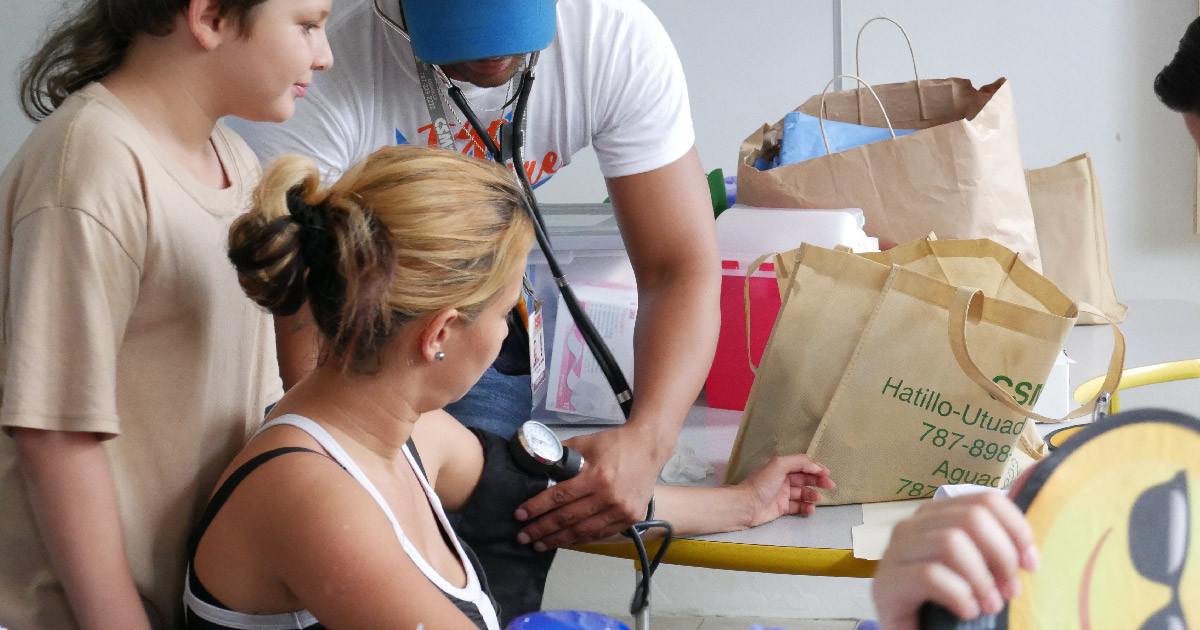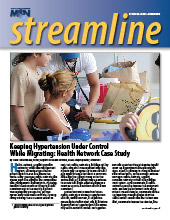
Hypertension Resources
In the spring of 2019, MCN offered a Project ECHO series for Community Health Workers in Spanish about hypertension. Project ECHO is a “hub-and-spoke” webinar educational model that allows for expert-led conversations, networking, and knowledge sharing by participants. Here are a few of the popular resources from the ECHO series.
Patient education comic books on hypertension: https://bit.ly/2WGfScc
“Control de la presión arterial,” (“Blood pressure control”) from the Centers for Disease Control and Prevention, features info - graphics for clinicians on blood pressure including incidence by region, state, and race and ethnicity: https://bit.ly/2LG2dla
“Cómo tomar la presión arterial correctamente” (“How to correctly take blood pressure”) is an infographic offered up by AXA Health Keeper. https://bit.ly/2E6jcXD
“Desmintiendo 7 mitos del sodio” (“Busting 7 myths about sodium”), from the American Heart Association, is one of several sodium-related infographics in Spanish, available at: https://bit.ly/2vVkxMz
The American Heart Association has numerous additional resources in English and Spanish: https://www.heart.org/en/health-topics/high-blood-pressure
Visit MCN’s Resources and Toolbox for extensive resources on hypertension for patients experiencing vulnerability: https://www.migrantclinician.org/tools-and-resources.html
Health Network, Migrant Clinicians Network’s virtual case management system, has served thousands of patients across the US and around the world. Many published Health Network case studies showcase dramatic and complicated case management: a patient with multidrugresistant tuberculosis who travels to a rural hometown out of the country; a patient whose pregnancy is high risk, yet who moves every three weeks for work; a young family crossing the US-Mexico border on foot. Yet, Health Network is available for any health concern a mobile patient may face. Patients may be signed up to ensure that a pap smear or blood test result is communicated after the patient moves out of the service area. Or, a patient may be enrolled to ensure that a new diabetes diagnosis is followed up with a nutrition class in a new hometown.
Another common concern for which Health Network is utilized is hypertension. Last fall, Renata Gomez*, a 66-year-old mobile agricultural worker, was at a routine appointment for hypertension at a community health center in Florida. Her hypertension was under control but required regular follow-up appointments and prescription refills. She was planning to move to another state further north, so the clinician enrolled Gomez in Health Network, Migrant Clinicians Network’s virtual case management system. Alma Colmenero, a Health Network Associate, received the enrollment form. Because the enrollment form came without medical records, Colmenero started by requesting medical records from the health center. Several calls and three weeks later, Colmenero received the records, and then reached out to Gomez directly.
“I tried to contact the patient: I called her, left voicemails, sent texts,” she recalled. About a month after receiving the medical records, Colmenero finally managed to catch Gomez on the phone. “She said she’s going to the clinic and is under care,” Colmenero found. The health center had enrolled Gomez, anticipating her move, but she hadn’t yet left Florida. The health center had written on the enrollment form the recommended schedule of appointments for Gomez. Gomez confirmed that she was following the schedule, and had attended another appointment in Florida since enrollment, so Colmenero followed up with the health center once more to receive updated medical records.
Hypertension is a common concern among agricultural workers. Data from 174 migrant health centers in 2017 show that almost 12 percent of patients had a diagnosis of hypertension; of the 875,142 patients served at migrant health centers, 101,535 had hypertension.1 Hypertension was the most common diagnosis among the reported health concerns. While fewer agricultural worker patients have a diagnosis of hypertension than the overall US population, foreign-born agricultural workers may be at risk related to acculturation, wherein the length of time spent in the US is associated with a higher risk of hypertension.2
Mobility, particularly among agricultural workers, whose work is unstable and often unpredictable, complicates care for chronic conditions like hypertension. Gomez’s health center took the extra time to enroll Gomez, despite an uncertain date of migration, as an anticipatory step to assure that, whenever she’s ready to move, Gomez will be able to continue her care and keep her hypertension under control. Colmenero will continue to keep up regular communication with Gomez, and, when she needs to move, Colmenero will help her find a new clinic, set up an appointment to keep her recommended schedule of appointments, and transfer her medical records.
This case highlights Health Network’s wide lens of care, and one of the many ways health centers utilize Health Network to anticipate patients’ mobility and assure continuity of care. While some of the case management had to slow down as Colmenero waited for medical records from the enrolling clinic, and waited to hear back from the patient, the high-touch and personal case management provided by Health Network is essential for keeping mobile patients in care, for any ongoing health concern, including hypertension – and, without such case management, patients like Gomez might fall through the cracks.
To learn more about Health Network or to schedule a training for your clinic on how to use Health Network, contact Theressa Lyons-Clampitt, MCN’s Senior Program Manager and Training and Technical Assistance Coordinator, at tlyons@migrantclinician.org.
* Patient's name has been changed to protect patient identity.
References
1 “Table 6A - Selected Diagnoses and Services Rendered.” 2017 National Migrant Health Centers Program Grantee Data. Health Resources and Services Administration. Available at: https://bit.ly/2XJJabo.
2 Boggess B and HO Bogue. The health of US agricultural worker families: A descriptive study of over 790,000 migratory and seasonal agricultural workers and dependents. J Health Care Poor Underserved. 2016;27(2):778-92. doi: 10.1353/hpu.2016.0089.
This publication is supported by the Health Resources and Services Administration (HRSA) of the U.S. Department of Health and Human Services (HHS) as part of an award totaling $1,094,709.00 with 0 percentage financed with non-governmental sources. The contents are those of the author(s) and do not necessarily represent the official views of, nor an endorsement, by HRSA, HHS, or the U.S. Government. For more information, please visit HRSA.gov
Read this article in the Summer 2019 issue of Streamline here!
Sign up for our eNewsletter to receive bimonthly news from MCN, including announcements of the next Streamline.
